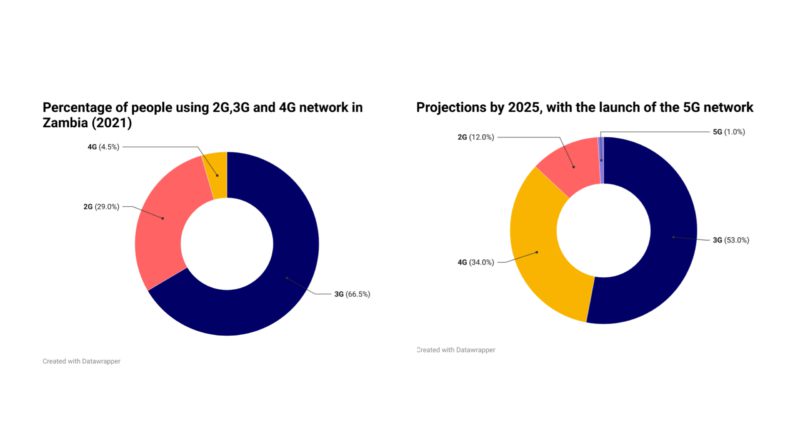Airtel Zambia has bought 60MHz of additional spectrum in the 800MHz and 2600MHz bands from the Zambia Information and Communications Technology Authority (ZICTA) for $29 million. Accordingly, the 700MHz frequencies which were expected in the first quarter of 2023 will now be issued, in the third quarter of 2022.
Why it matters
This would increase its capacity to encourage investment, expand the delivery of telecom service, and improve the quality of electronic communication services for consumers in the country.
- MTN Zambia, the second leading mobile operator in Zambia to Airtel Zambia, in the Q2 of 2022, with over 8.5 million subscribers already launched the 5G service in January. Hence, with two telecom providers hosting the 5G network, Zambia would become one of the few countries to do so.
By the numbers
Data shows that just 4.5 percent of the 18.38 million (2020) people in Zambia were using 4G as of December 2021 while the greater number of people (66.5 percent) were using 3G and 29 percent were still using 2G.
Therefore, projections are that with the launch of the 5G network, the number of people using the 4G network would grow to 34 percent by 2025 while 3G users will depreciate to 53 percent and 2G to just 12 percent. Meanwhile, 5G users might just be around 1 percent in 2025.
African scope
The adoption of the fifth-generation network on the African continent has been a very slow one. With the 5G network being active in about 70 countries around the world according to a projection by GSMA, only a handful of African countries have caught on.
Nigeria, Africa’s most populous nation, recently joined the short list of countries on the continent which operate the fifth-generation technology. The other countries include the likes of Kenya, South Africa, Ethiopia, Seychelles, Zimbabwe, Togo, etc.
The big picture
A special report has revealed that 3G still dominates Africa’s internet because smartphone penetration is not high enough. On a general note, 5G enabled devices are not affordable enough for many Africans. A study in Kenya showed that 94 percent of its population owns devices that cost about $200 or less, while the cheapest 5G devices cost $300 and more.
Apart from the expensive cost of 5G devices, pioneers of 5G on the continent are facing issues including commercial viability, expensive cost of internet access, lack of clarity in spectrum regulation, amongst others.

